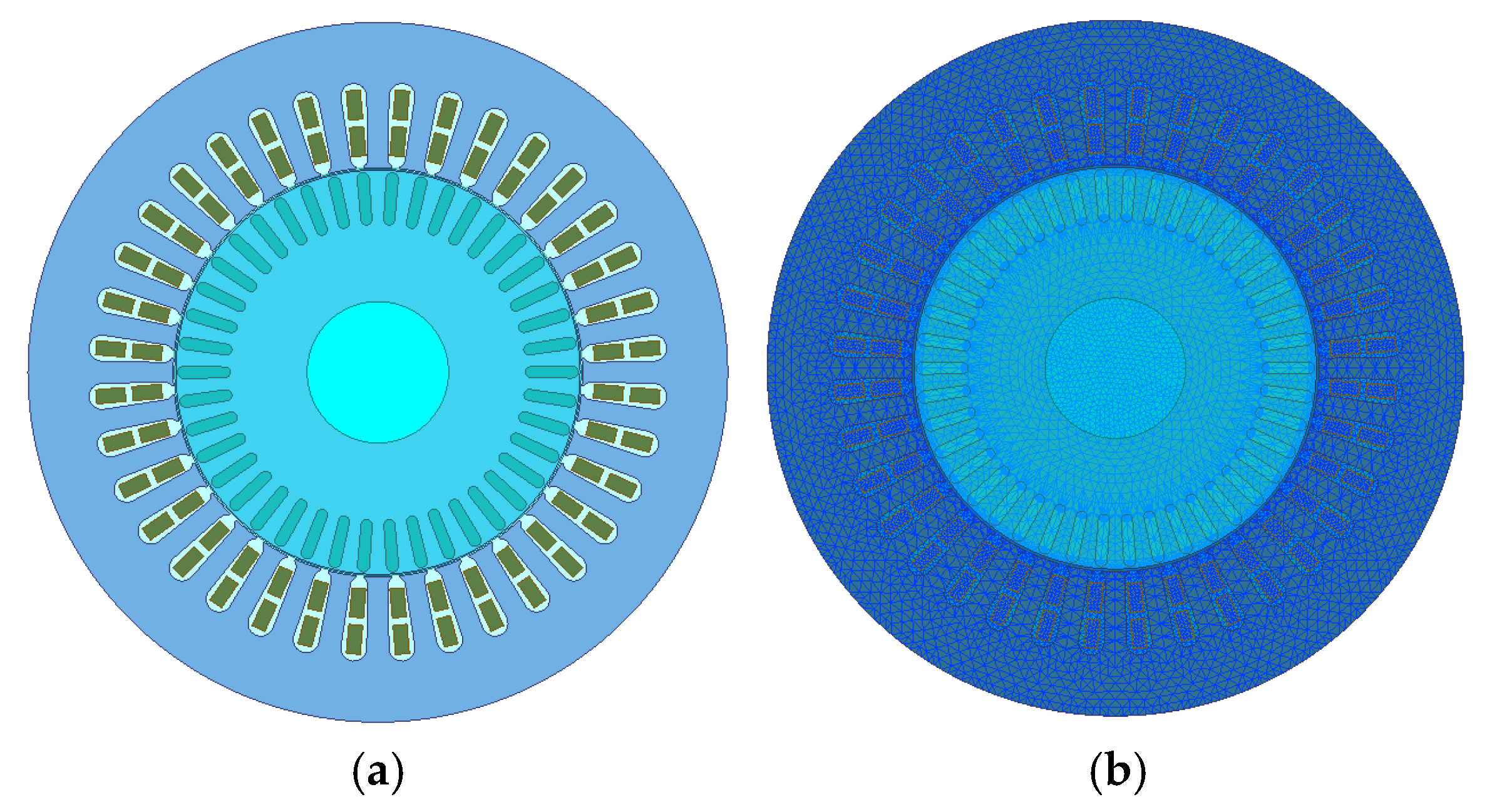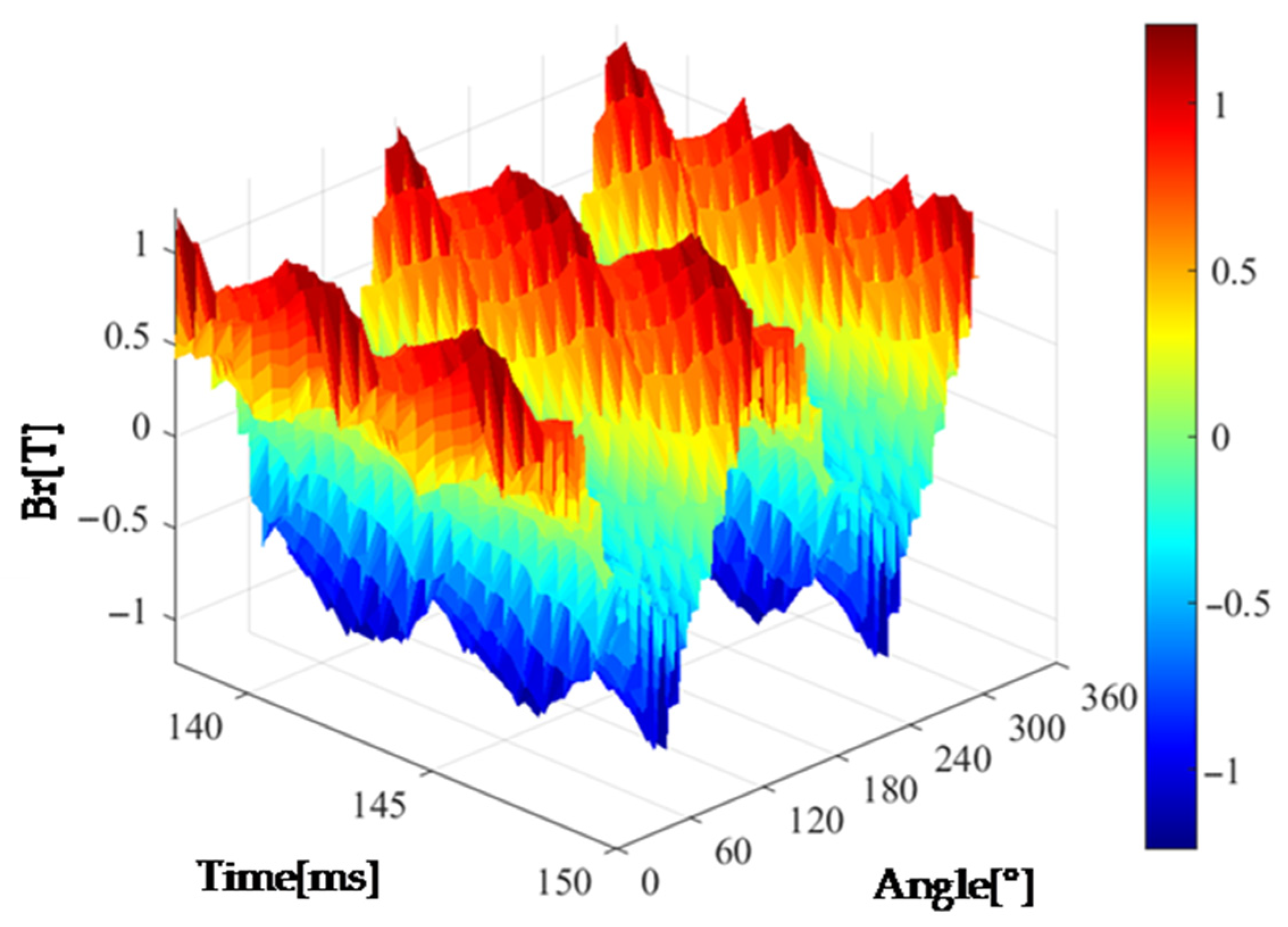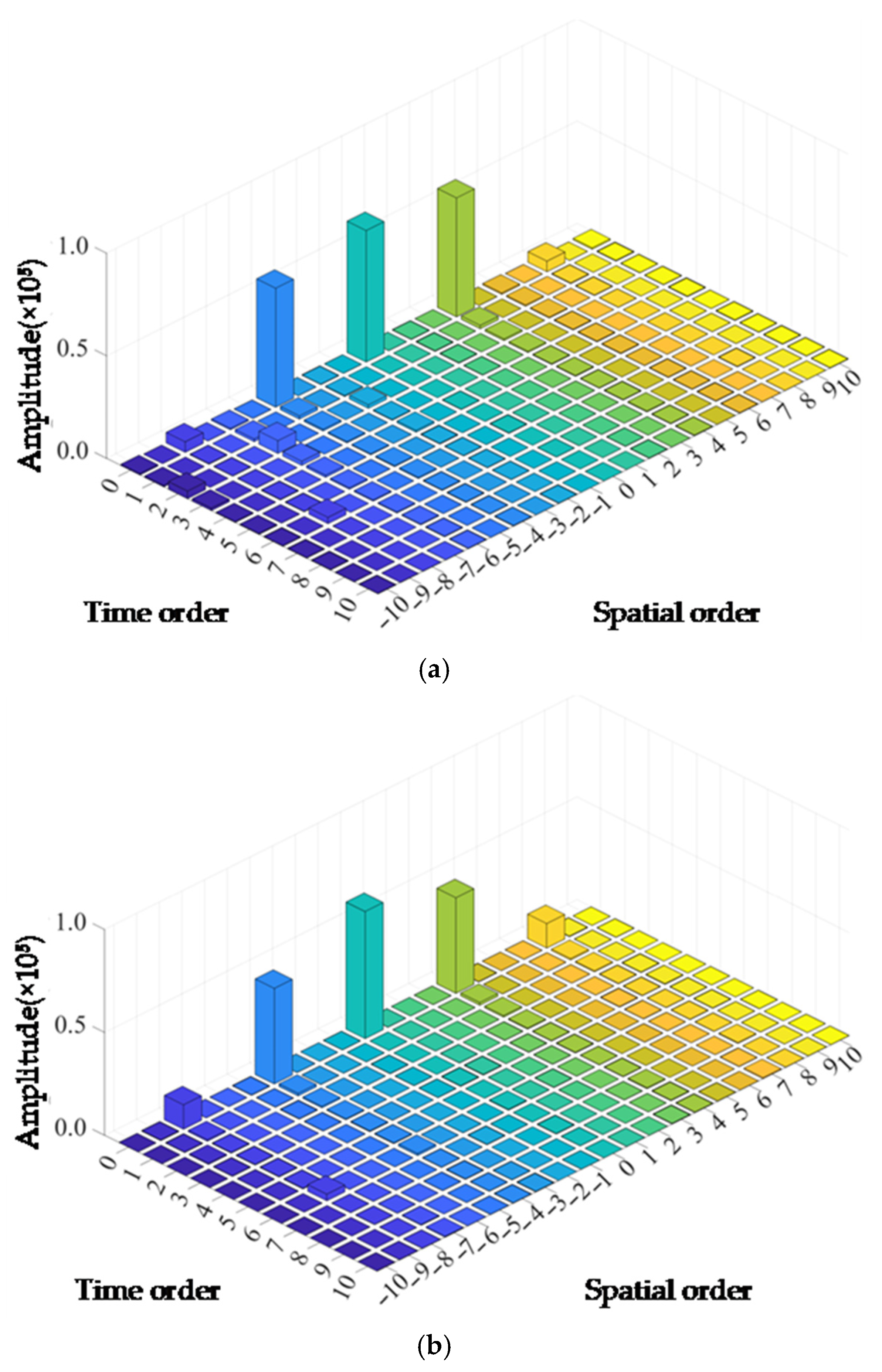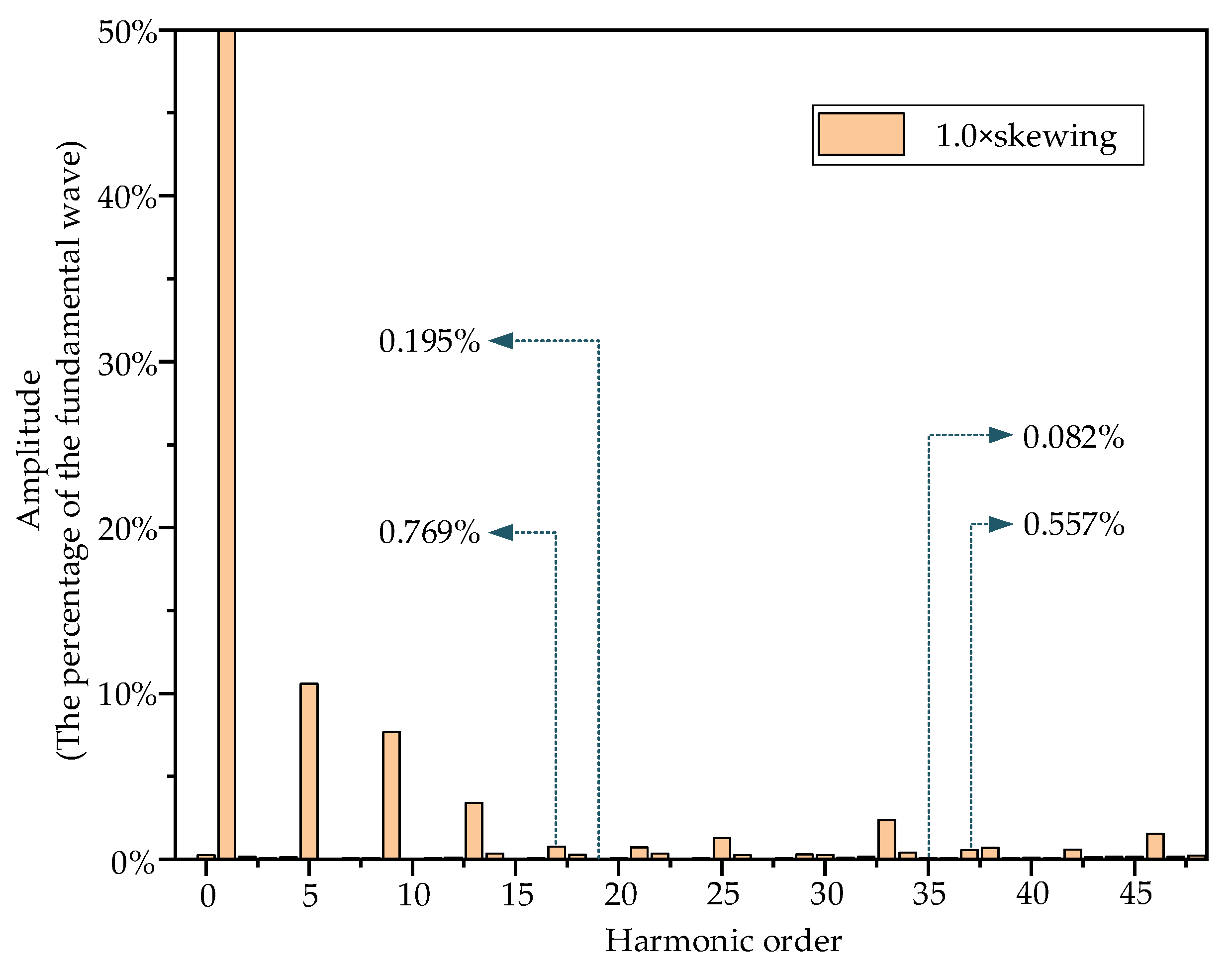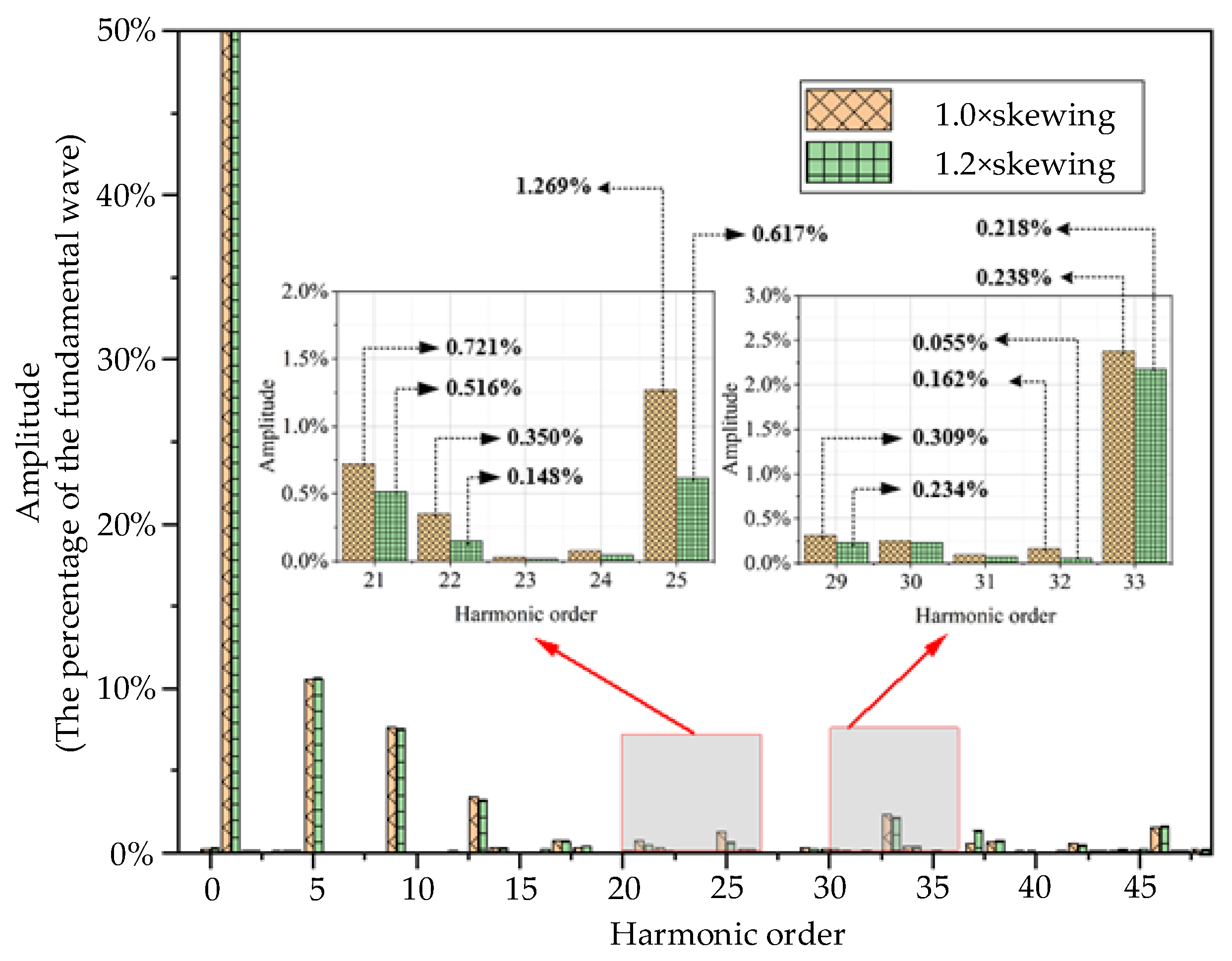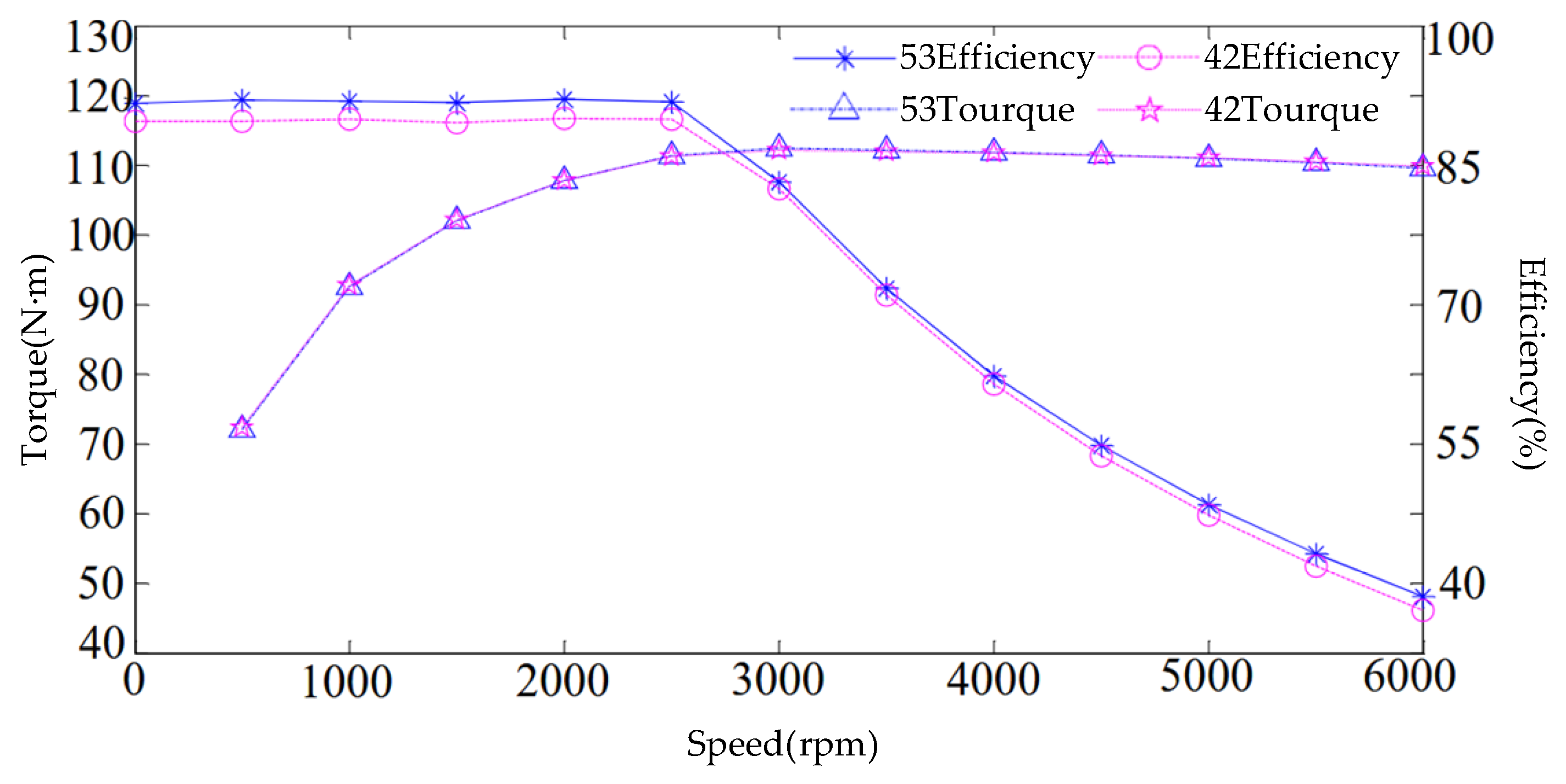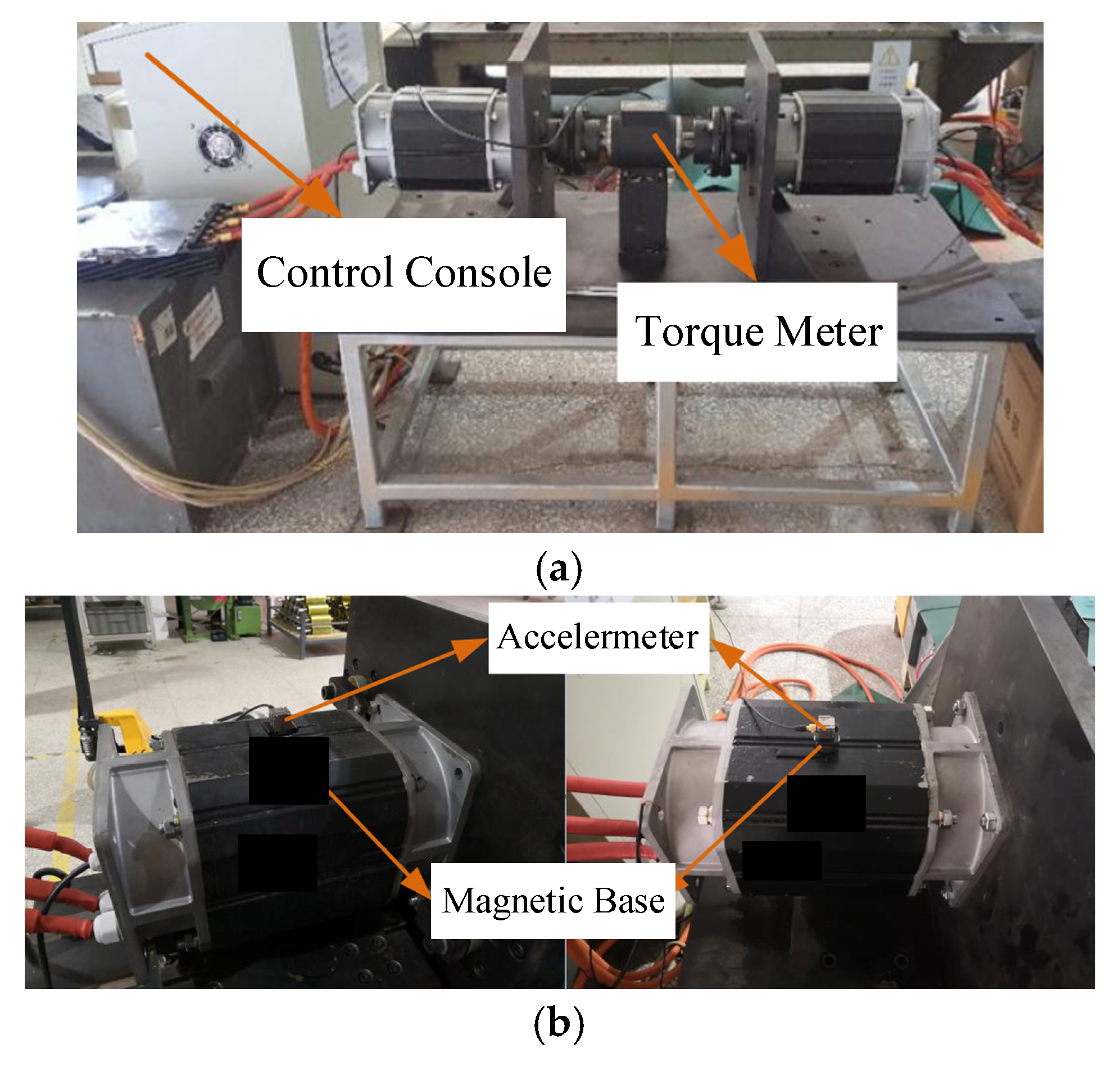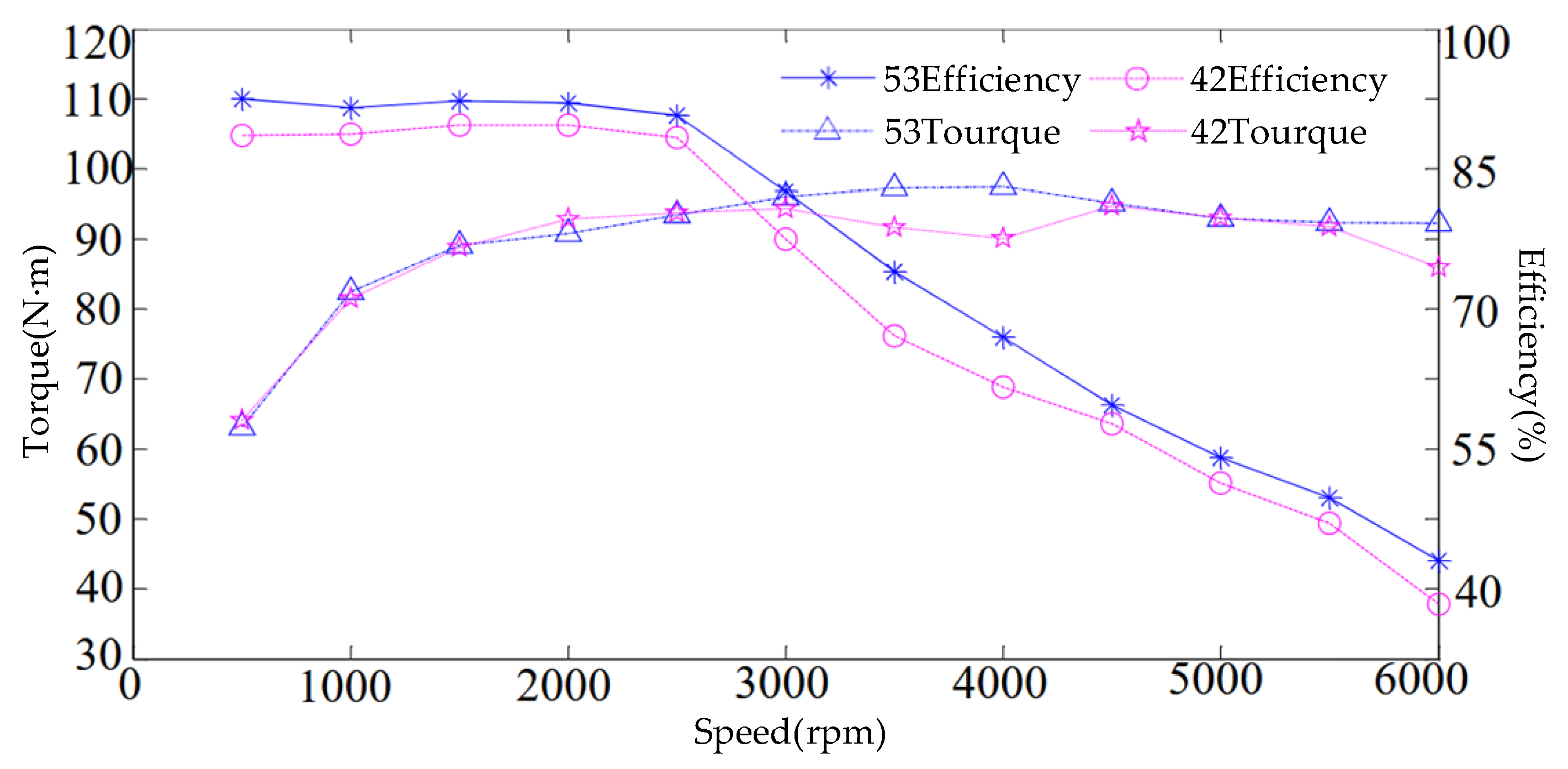2.1. Magnetic Potential of Stator and Rotor Windings and Air Gap Magnetic Permeability
The classical electromagnetic wave theory analysis typically takes the magnetic potential of the winding and the magnetic permeability of the air gap as its fundamental points, expressing the magnetic flux density in the air gap as
According to Maxwell’s equations, the radial electromagnetic force wave acting on the stator core is proportional to the square of the magnetic flux density in the air gap, i.e.,
where
pr(
θ,
t) is the radial electromagnetic force wave;
b(
θ,
t) is the air gap magnetic flux density;
f(
θ,
t) is the magnetic potential of the winding; and
μ0 is the vacuum magnetic permeability, whose value is 4π × 10
−7 H/m.
The magnetic potential synthesized by the stator and rotor windings is analyzed using Fourier analysis, and the results can be expressed as
where
F0,
Fυ, and
Fμ are the fundamental amplitude of the three-phase winding magnetic potential, the
υ-th harmonic amplitude of the stator winding magnetic potential, and the
μ-th harmonic amplitude of the rotor winding magnetic potential, respectively;
p is the number of pole pairs of the motor;
θ is the mechanical angle; and
φ0,
φ1,
φ2 are the initial angles of the fundamental wave, the initial angles of the
υ-harmonic magnetic flux, and the initial angles of the
μ-harmonic magnetic flux, respectively;
ω1 is the angular frequency of the composite magnetic flux of the fundamental wave; when the stator has an integer number of slots and the rotor is a squirrel-cage rotor, the angular velocity of the rotor’s
μ-harmonic magnetic flux can be expressed as:
Similarly, for the air gap magnetic flux, when the stator and rotor slots are open, the air gap magnetic flux can be approximately expressed as:
where Λ
0 is the constant component of the magnetic flux; Λ
ks is the harmonic component of the magnetic flux considering the stator slots; Λ
kr is the harmonic component of the magnetic flux considering the rotor slots; and Λ
ks and Λ
kr are the harmonic components of the magnetic flux considering both the stator and rotor slots.
2.2. Magnetic Field in Air Gap and Radial Electromagnetic Force Waves
Generally, the magnetic flux harmonic components Λ
k1Λ
k2 are neglected when the stator and rotor are slotted simultaneously, and the air gap magnetic field can be expressed as
In the entire air gap magnetic field of the motor, in addition to the fundamental wave component, there are six main types of harmonics: stator magnetic momentum tooth harmonics, rotor magnetic momentum tooth harmonics, stator magnetic permeability tooth harmonics, rotor magnetic permeability tooth harmonics, winding phase band harmonics, and saturation harmonics. The composition of the fundamental magnetic field and tooth harmonic magnetic fields is shown in
Table 1.
In the table, Zs represents the number of stator slots; Zr represents the number of rotor slots; s represents the slip rate; and ks represents the order of the stator tooth harmonic, with values of ±1, ±2, ±3, etc. For example, when ks = ±1, it is referred to as the first-order stator tooth harmonic; kr represents the order of the rotor tooth harmonic, with values the same as ks.
The stator magnetic field tooth harmonic flux density (spatial harmonic magnetic field caused by the non-sinusoidal distribution of the stator windings) and the stator magnetic permeability (periodic variation in the air gap magnetic permeability caused by the stator slot structure) are superimposed vectorially to form the stator-side tooth harmonic magnetic field; similarly, the rotor magnetic field harmonics (harmonic magnetic fields generated by the rotor bars) and the rotor magnetic flux density harmonics (magnetic flux modulation harmonics caused by the rotor slot structure) are vectorially superimposed to form the rotor-side tooth harmonic magnetic field.
Substituting Equation (6) into Equation (2) yields the expression for the radial electromagnetic force wave generated by the air gap magnetic flux density:
As can be seen from Reference [
19], the amplitude of electromagnetic force waves decreases in proportion to the n
4 order of the force wave. Therefore, three principles apply in the analysis of electromagnetic force waves: the dominance of low-order force waves, the secondary role of high-order force waves, and the ineffectiveness of constant components. Simplifying Equation (7), we obtain the following two main types of radial electromagnetic force waves in air gaps:
- (1)
Radial electromagnetic force waves generated by the fundamental magnetic field
The radial electromagnetic force waves generated by the fundamental magnetic flux density in the air gap are
The frequency of this component of the force wave is twice the motor power supply frequency, and the order of the electromagnetic force waves is also twice the number of motor pole pairs, making it impossible to eliminate through motor optimization design methods. For large motors with low natural frequencies, low-frequency resonance with twice the power supply frequency is likely to occur, leading to a significant increase in structural vibration amplitude. For medium and small motors with high natural frequencies, the vibration frequency at twice the power supply frequency falls within the low-frequency range that is inaudible to humans, and its impact on practical applications can be neglected.
- (2)
Radial electromagnetic force waves generated by stator and rotor tooth harmonics
The radial electromagnetic force waves generated by the mutual modulation of stator and rotor tooth harmonics through the air gap magnetic field are:
This component of the force waves is typically the primary contributor to electromagnetic vibration and noise in induction motors, characterized by low order and large amplitude, particularly the first-order tooth harmonics. Suppressing these harmonics is an effective method for reducing electromagnetic vibration and noise.
From Equations (8) and (9), the main magnetic potential waves, magnetic flux waves, and electromagnetic force waves generated by mutual interaction, and their corresponding frequencies in the air gap magnetic field are derived, as shown in
Table 2,
Table 3, and
Table 4, respectively.
In the table, υ represents the harmonic order of the stator-side teeth, and μ represents the harmonic order of the rotor-side teeth.
The motor studied in this research has a 36/42 slot configuration. The low-order radial electromagnetic force waves that may exist in this motor are calculated from
Table 4 and shown in
Table 5:
Table 5 reveals that the tooth harmonics at (
ks = 1,
kr = −1) and the stator/rotor winding higher-order harmonics at (
k = −4,
kr = 1) generate a second-order radial electromagnetic force wave. This low-order force wave readily induces significant electromagnetic vibration and noise in the motor. Given the motor’s maximum speed of 6000 rpm and the number of pole pairs being 2, the maximum frequency of the second-order radial electromagnetic force wave can be calculated as 4600 Hz. This exceeds the second-order natural frequency of small induction motors (typically around 1000 Hz). Furthermore, the second-order electromagnetic force wave includes force waves induced by tooth harmonics, which have a relatively large amplitude. This can easily cause severe resonance in the motor, necessitating optimization of the motor’s slot fit.
